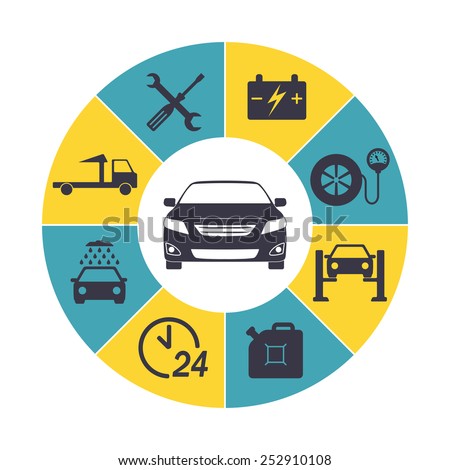Evaluating Your Vehicle'S Warning Indicators: What They Actually Convey
Evaluating Your Vehicle'S Warning Indicators: What They Actually Convey
Blog Article
Short Article Developed By-Sykes Torres
When you're behind the wheel, those beautiful warning lights on your control panel can be a little bit bewildering. Do you understand what they're trying to tell you concerning your auto's health and wellness? Understanding the importance of these lights is essential for your safety and the long life of your vehicle. So, the next time one of those lights appears, would not you intend to decode its message properly and take the needed actions to resolve it?
Common Caution Lighting and Interpretations
Identify common warning lights in your cars and truck and comprehend their significances to make certain risk-free driving.
The most common warning lights consist of the check engine light, which signifies problems with the engine or emissions system. If this light comes on, it's crucial to have your automobile checked promptly.
boat cut and polish cautioning light indicates low oil stress, needing prompt interest to avoid engine damage.
A flashing battery light could suggest a malfunctioning charging system, potentially leaving you stranded if not attended to.
The tire stress monitoring system (TPMS) light informs you to low tire stress, affecting lorry stability and gas efficiency. Neglecting this might cause dangerous driving conditions.
The abdominal light indicates a trouble with the anti-lock stopping system, compromising your ability to stop promptly in emergency situations.
Last but not least, the coolant temperature warning light warns of engine getting too hot, which can cause serious damages if not resolved promptly.
Comprehending these typical warning lights will help you resolve problems quickly and preserve risk-free driving conditions.
Importance of Prompt Attention
Understanding the common warning lights in your car is only the first step; the value of immediately resolving these cautions can not be stressed sufficient to ensure your safety and security when driving.
When a warning light brightens on your dashboard, it's your cars and truck's way of communicating a possible concern that needs attention. Overlooking these warnings can result in much more serious problems in the future, jeopardizing your safety and possibly costing you more out of commission.
Prompt focus to advising lights can stop break downs and mishaps. As an example, a blinking check engine light could show a misfire that, if left neglected, could trigger damages to the catalytic converter. Resolving this quickly can conserve you from a costly repair.
In a similar way, a brake system cautioning light could signal reduced brake liquid or used brake pads, crucial parts for your safety when driving.
DIY Troubleshooting Tips
If you discover a warning light on your control panel, there are a couple of DIY repairing ideas you can try before looking for professional aid.
The primary step is to consult your cars and truck's manual to recognize what the particular caution light shows. Occasionally https://www.moneytalksnews.com/slideshows/foreign-homebuyers-are-flocking-to-these-10-states/ can be as simple as a loosened gas cap triggering the check engine light. Tightening up the gas cap might deal with the trouble.
Another common problem is a low battery, which can cause different warning lights. Checking the battery connections for rust and guaranteeing they're protected could fix the trouble.
If a caution light persists, you can attempt resetting it by disconnecting the auto's battery for a few minutes and afterwards reconnecting it. Additionally, examining ceramic coating nz , such as oil, coolant, and brake liquid, can aid fix cautioning lights associated with these systems.
Final thought
In conclusion, recognizing your cars and truck's caution lights is important for maintaining your car running efficiently and securely. By promptly dealing with these signals and recognizing what they imply, you can prevent expensive repair services and possible break downs.
Keep in mind to consult your vehicle's manual for particular information on each alerting light and take action accordingly to make certain a hassle-free driving experience.
Remain educated, stay safe when traveling!
